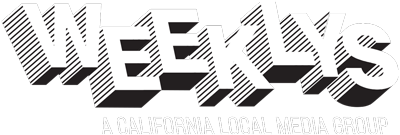Gilroy
– The district board of trustees voted last week to spend
$25,000 to explore the possibility of incorporating a large array
of solar panels into the design of Christopher High School’s roof –
a move that could save the district more than $2 million during the
next 20 years, proponents said.
Gilroy – The district board of trustees voted last week to spend $25,000 to explore the possibility of incorporating a large array of solar panels into the design of Christopher High School’s roof – a move that could save the district more than $2 million during the next 20 years, proponents said.
The Gilroy Unified School District could double or triple this amount if traditional energy costs continue to rise and if the district installed arrays at multiple schools – an idea promoted by Trustee Jaime Rosso.
The unanimous vote to pursue planning solar technology at the new high school came at a March 15 board meeting following a pitch by Eric Anderson, a principal at the Bay Area-based Solar Financing Solutions.
In his presentation, Anderson claimed that his company could sell the district electricity at a lower cost than its current supplier, Pacific Gas & Electric Co. The savings could amount to $750,000 or more during the course of 20 years, he said.
Anderson’s figures assume that grid rates from traditional utilities will continue to rise at 6.7 percent per year, as they have for the past 30 years. The company, by contrast, will sell solar energy at a starting price of 90 percent of the utility’s rate and then raise the rate 5 percent each year.
The company also offers rate readjustments after 10 and 15 years. These checks would reset the price for electricity from the company at 90 percent of the utility’s rate.
A Natural Bounty
Extrapolating the recent trend of PG&E electricity rates, the district would not have to worry about using these readjustments. With prices increasing an average of 9.4 percent yearly for the past 15 years, solar energy could translate into nearly $2 million of savings in 20 years.
Some proponents of green energy think that even this figure is a conservative estimate.
“The district will probably save in the millions of dollars based on the amount of electricity that Christopher High School will use,” said Christopher Cote, chair of the district’s environmental oversight committee.
In the arrangement outlined by SFS, the company would supply solar panels to the district. However, the company would continue to own the solar panels and perform maintenance on them. The majority of the panels would not be visible from the ground.
The company will charge the district for its electricity usage and sell any unused electricity by Christopher High School to other power companies for a profit. The district would remain connected to its current supplier as backup to provide electricity when power generated by the solar array is insufficient.
The board did not enter into any agreement with SFS – and no agreement would be offered by the company until it secures government grants so it can ensure it turns a profit – but trustees were convinced by Anderson’s pitch to authorize the new high school’s architect to spend $25,000 to incorporate the use of solar panels into the plans.
The authorization also qualified the district to receive about $20,000 in grant money from the Collaborative of High Performance Schools – a California organization promoting better-lit and healthier educational facilities.
The possibility of the district reducing energy costs in the future is worth the initial net expenditure of about $5,000, Rosso said.
“We’re talking about saving big bucks,” he said.
Spreading the Wealth
The confluence of environmental impact reduction and district savings was something the board of trustees should try to make happen at other facilities, Rosso added.
“If (Solar Financing Solutions is) talking about big savings every year, it’s obvious that we would pursue that not only for Christopher High School but for the district,” he said.
Based on the last year’s power expenditure at Gilroy High School – about $500,000 – solar power from a private company could save $50,000 in the first year. During a 20-year span, savings could be close to $2 million.
The motivation to consider solar energy is more than just economical, Rosso said.
Santa Clara County ranks 51 out of the 58 California counties in air quality, according to government and scientific data gathered by Scorecard, an Internet research site.
Gilroy has several sections of town that are ranked in the second highest tier for presence of carcinogenic particulates in the air.
Reducing environmental hazards such as these is a responsibility of the district, Rosso said.
“The writing is on the wall that we need to get proactive in that way,” he said.













